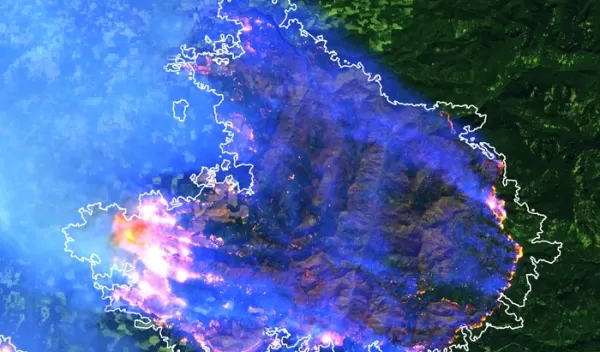
Extreme winds, topography and vegetation influenced Oregon's devastating 2020 megafires
In early September 2020, severe winds, high heat and prolonged drought conditions led to the explosive growth of wildfires along the western slopes of the Cascade Mountains in the U.S. Pacific Northwest. The fires engulfed enormous tracts of forestland, destroyed communities, took dozens of lives and cost hundreds of millions to fight.
In a study examining burn patterns from the 2020 Labor Day fires, scientists at Portland State University and other institutions studied the influence of weather, topography, vegetation and other factors on burn severity in areas where the fires killed more than 75% of the trees.
Their U.S. National Science Foundation-supported research confirms that extreme winds over the Labor Day holiday were the primary driver of the destructive force of the fires, and demonstrates how forest vegetation structure and topography played a significant role in burn severity patterns. The results are published in the journal Fire.
"The research highlights the importance of understanding the complex factors that control the capacity of fire-prone socio-environmental systems, such as the Pacific Northwest, to cope with and adapt to intensifying disturbance regimes," said Liz Blood, a program director in NSF's Division of Environmental Biology.
The wet temperate forests of the Cascade Mountains have a history of megafires on the scale of those that burned in 2020, but none had occurred since the early twentieth century.
Because the scope and scale of the burns were unprecedented in modern times, they provided the research team with a unique opportunity to gain a better understanding of the factors that influence the high severity of burns in rainforests, including those on the western slopes of the Cascades.
That understanding can inform planning for future land-use management in forestlands, scientists say, and the social and ecological impacts of extreme fire events on a warming planet.
